The way we interact with cities is changing, and smart bus stops are playing a key role in keeping communities informed and engaged. In large cities and highly connected areas, it is essential for travelling residents and tourists to have the most up-to-date travel information.
Whether it’s real-time travel updates, enhanced accessibility, or engaging visuals, cities must deliver this information in an engaging, relevant manner.
Thanks to digital signage technology, cities, councils and bus companies have been able to supercharge the digital bus stop scene.
Digital bus stops are so much more than a bus timetable that’s been copied onto a digital display. Thanks to a range of features and data integrations, users can enhance the passenger and resident experience, optimising how they engage. They can even be used for Out of Home (OOH) campaigns to make a huge impact in real life and online as part of a wider campaign.
In this blog, you’ll learn what a smart bus stop is, how live data integrations can transform the commuting experience forever, how much you can expect to invest, and how these digital bus stops are installed.
We’ll also take you through our top 7 ways Smart Cities are using these bus shelters right now. All this and more in our Ultimate Guide to Smart Bus Stops.
Can’t wait? Click the button below and get answers in seconds from one of our team.
What Are Smart Bus Stops And Smart Bus Shelters?
A smart bus stop (or smart bus shelter) is a bus stop that features an integrated digital screen. The digital screens are often installed at bus shelters that feature rain cover and a bench. In the majority of cases, digital screens replace print advertisements or print material that previously existed on the sides of the bus shelter. See below for an example of a typical smart bus shelter you might find in a town or city.
The digital screens are fully weatherproof and vandal-proof, giving peace of mind regarding lifetime value, content deployment and maintenance costs.
Despite being digital, they still include classic features you’d come to expect on a standard bus shelter. These include lighting, solar panels on top (for more eco-friendly light powering), seating, security cameras and more. They are also fully connected to the internet by WIFI, ethernet, or 4G. Meaning, that through a powerful media player, users can control the content that is shown on screen from a remote location and update it instantly.
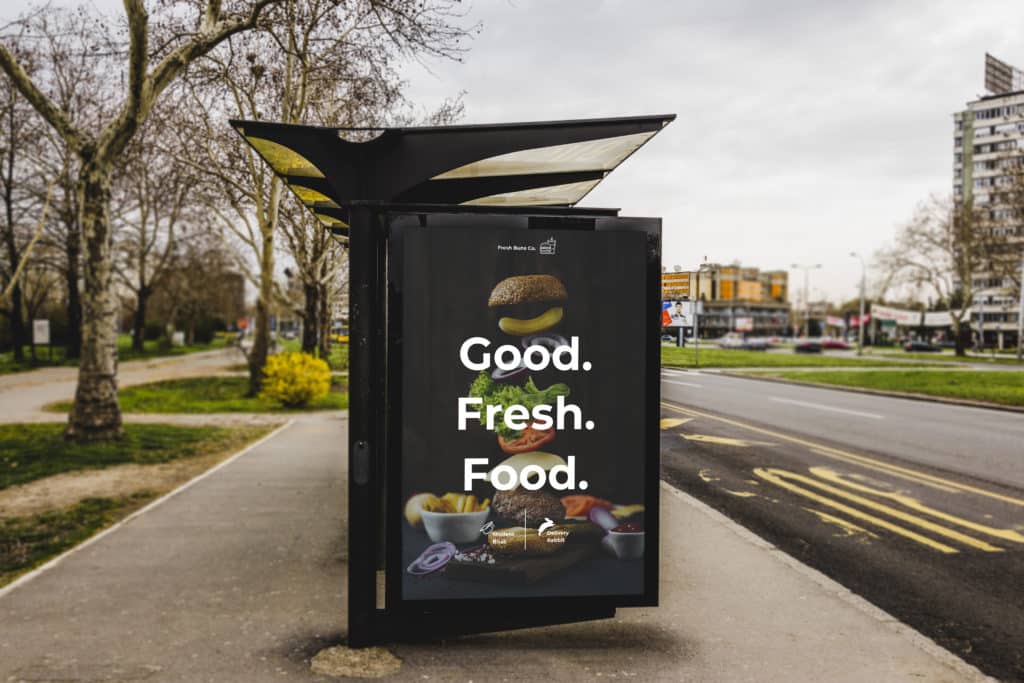
Live Data Integrations for Smart Bus Schedules
Data is powerful. With data integrations, users can see live weather information anywhere in the world, traffic delays, live sea tide times, and much, much more. But how exactly does live data enhance bus stops?
Well, one of the main purposes of a bus stop is to inform passengers when a bus is due to arrive. With live bus information APIs, however, smart bus shelters can do better. Not only can they display when a bus is going to arrive in real-time, but they can also let passengers know of any expected delays such as road closures, live road accidents, or road works, allowing them to plan their journey more efficiently.
Smart bus schedules are helping bus companies and councils drastically improve the commuting experience. In the past, passengers would be left with a static bus timetable informing them of exact stop times. However, we’ve likely all experienced the true reality of waiting for an extra 45 minutes in the rain while waiting for your bus to appear!
Static bus schedules can’t predict changes or delays. In contrast, real-time data provides live service updates and route changes, ensuring you’re always informed and never left scrambling for an alternate way home.
Want to learn more about how live data and APIs are being used with digital screens?
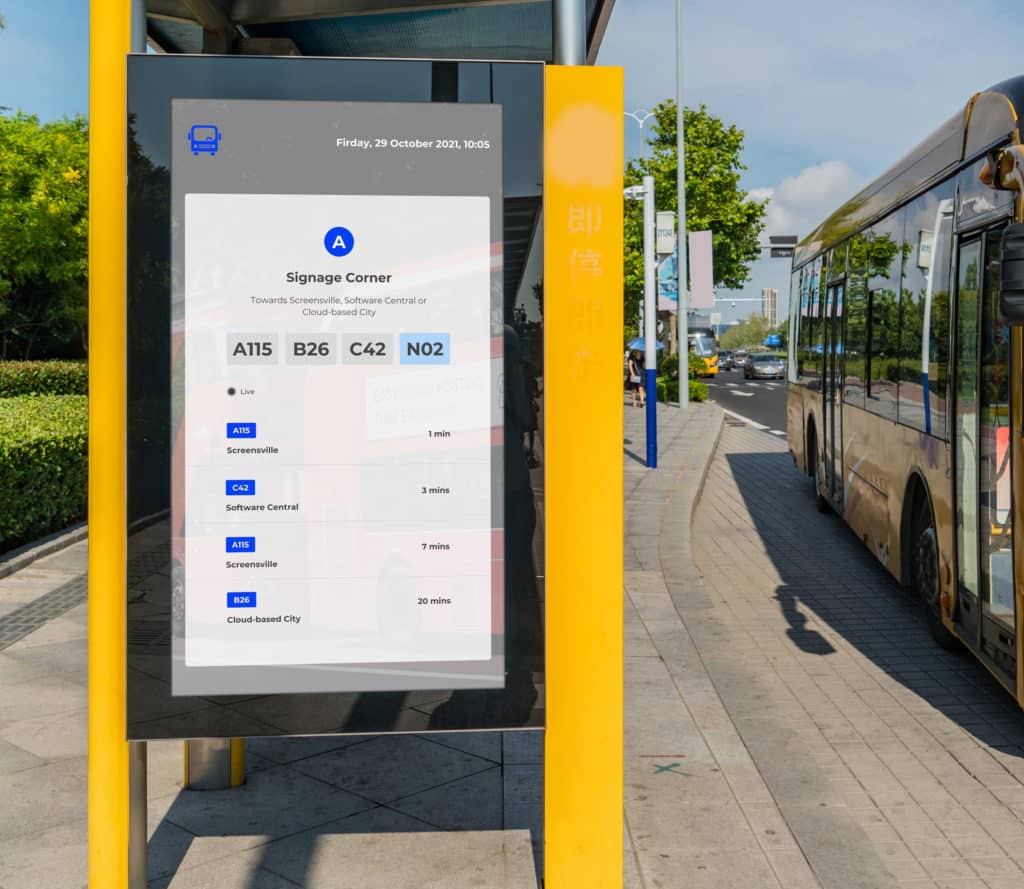
How Much Do Smart Bus Stops Cost?
Hardware
On the whole, prices for screens in the digital signage industry have fallen noticeably in the last few years. This has made the technology more widely accessible, allowing more users to take advantage of the technology. Bus stop screens, however, tend to sit on the higher end of pricing compared to a standard digital display.
The reason for the higher cost is due to the specialised features built in to aid with performance, weather, safety and security. These screens require a more permanent and specialist installation which can include integrating inside existing bus stop shelters, re-wiring internet lines etc.
Smart bus stop screens are essentially outdoor kiosks with specialised integrations into a new or existing structure.
Outdoor kiosks typically require an investment of a few thousand pounds, however, the price ultimately depends on screen size, quality, and any additional features.
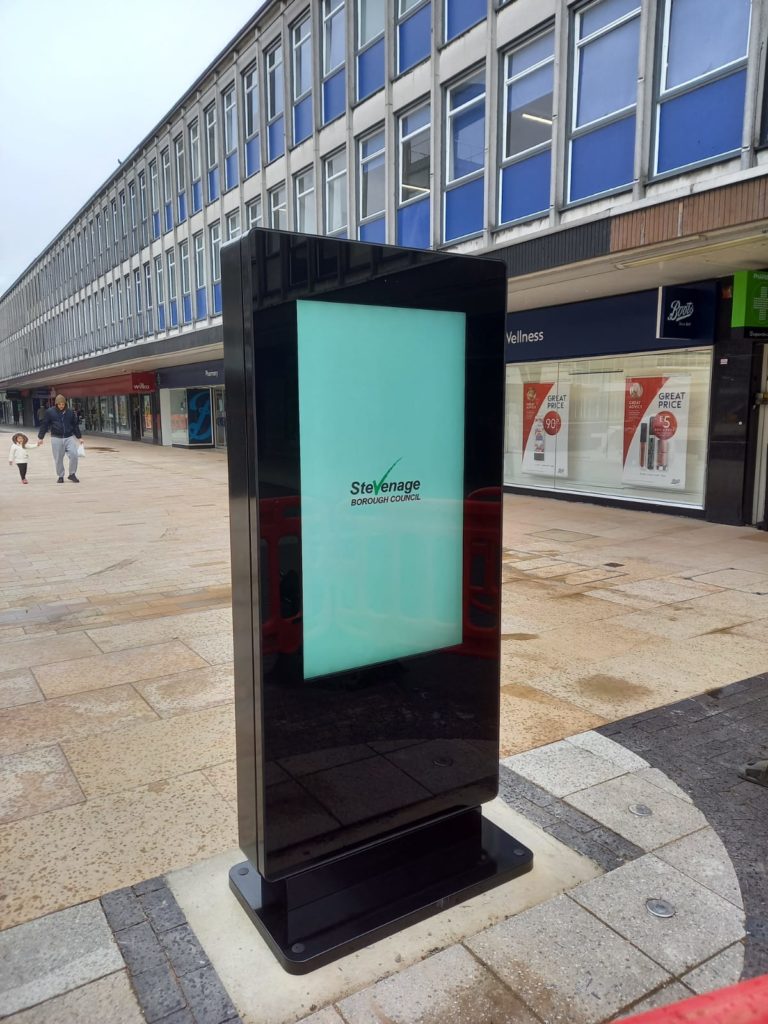
Software
A key benefit of smart bus stops is that you can use the same digital signage software you use for your other screens.
This means that if you’re a city council who manages the local bus routes, you can add licences to your account for the digital bus shelter screens and control these from the same account.
Each screen is controlled via a media player, which connects to your screen and the internet. When changes are made in your software, the media player displays them on screen. It is that simple!
Software prices can range from free, to upwards of thousands per month. Although we all love “free” software, it can often mean a restriction on features, limited support, forced advertisements, bugs, lack of updates and much more. On the other end, if you’re being charged tens of thousands for software, you could potentially be overpaying for something. For best practice, we recommend looking at the monthly fee for software and factor in how many licenses you require, as the higher the amount of licenses, the higher the cost will be.
At TrouDigital our pricing starts at £48 for 3 licences (£16 per licence). When researching the different software on offer, it’s vital to make sure you’re getting the best support possible, alongside all the features that ensure your digital signage project is a success.
Installing a Smart Bus Shelter Network
So, you’ve picked out your screens, designed the bus stops and purchased your software licences. Now it’s time to get everything installed and set up. But where do you start and what do you need to know?
Planning Permission
If you’re a council and reading this, this section might not be so much of an issue for you. However, some outdoor screen projects may require prior planning permission from your council or city. This is especially the case if you’re looking to add in completely new structures or remove any pre-existing structures. We recommend you contact your local planning permissions office to discuss the project.
Site Surveys
An extension to planning permission. You’ll want to ensure that the area you’re looking to install your smart bus stop and screen is suitable. For example, without a prior site survey, you might start to dig and hit an underground pipe. A site survey can also help determine the most optimal place to install the smart bus stop for maximised visibility and engagement.
Power
Wherever you’re planning to add your smart bus stop screens, they’ll need adequate power. This may mean locating power cables or sufficient power sources. In some cases, you may need to do some digging and run a fresh power line to your new bus stop. If you’re simply replacing a static poster with a screen, this shouldn’t be much of an issue. Again, it’s an important point that must be considered.
Internet
For your bus stops to display the latest digital signage content, a strong internet connection is essential. But how are smart bus shelters connected to the web?
WIFI – For connecting through wifi, simply find the desired network on the media player, enter the credentials and press connect. Once connected, your screen is ready to receive content and be controlled remotely (A good Wi-Fi connection is essential to maximise its potential).
Ethernet – A wired internet connection is best practice if possible. A wired ethernet connection often results in a more consistent internet connection and, in most cases, faster speeds. The faster and stronger your internet connection is, the quicker your screen can download the latest content updates.
4G Sims and Routers – Another popular option for connecting your smart bus shelter to the cloud is utilising a 4G sim and router. This option is perfect for rural locations or when getting a wired or WIFI connection is difficult. 4G routers will give your bus stop screens their own dedicated network, providing a strong yet secure connection. Some of our largest projects are being powered by 4G routers, including British Airways.
When it comes to connecting your media player to the internet, the most important aspects to consider are speed and connection strength. Not only does this contribute massively to screen operating times, but it also ensures your screens update instantly once changes are made in the software. It’s especially important to consider internet strength and speed if utilising live data feeds or video streaming.
7 Reasons Why Your City Needs A Smart Bus Stop
1. Live Bus and Travel Updates
One of the most important aspects of a commute is knowing exactly when you can expect to arrive at your destination. It helps us let loved ones know we’re safe, gives us time to let someone know that we may be late, and helps us know whether we have time to finish off a book chapter or a Netflix show.
In recent years, more councils and bus companies have been improving their services by investing in data. With data, screens at bus stops are being utilised to let passengers know exactly when their bus is due to arrive. This has been a huge step up from the laminated paper timetable. However, there is so much more that can be done.
With live data and API integrations, a smart bus stop can notify passengers of every detail of their journey. Whether it be bus arrival/departure times, service status delays on the road, or even weather at the destination, people appreciate being in the know.
Live travel updates are brilliant in keeping you fully informed about your route. For example, if a traffic accident happens on the A115 route, this could trigger the screen to automatically update arrival times. This transparency is invaluable in keeping work teams up to date if you’re going to miss the 9 am meeting and could even provide enough notice to plan an alternate route to work.
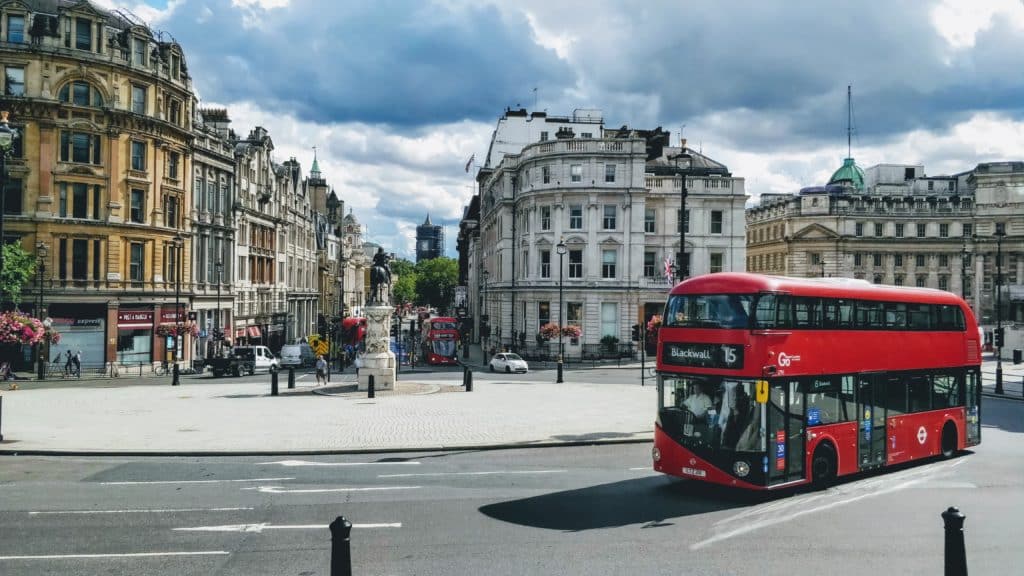
2. Digital Bus Stop Advertising | Smart Revenue Streams for Smart Bus Shelters
Advertising on digital screens is hugely popular, and this extends to screens at bus stops. Digital bus stop advertising is one of the most recognised channels for marketing and advertising. It provides a huge amount of reach for brands around the world. Whether you’re in a big city or small town, you know the bus stops will have advertisements on them. Whilst many are being replaced with digital screens, a large amount still use a single poster or a roller poster. This method restricts the number of ads that can be shown and takes up large amounts of time in content deployment.
Although digital bus stops are a powerful advertising platform for companies, this section will concentrate on the individuals and organisations that sell advertising space. These users are most interested in weekly revenue, profitability, and a streamlined process. Given the higher initial cost of digital screens compared to posters, we’ll explore why advertisers should make the switch.
Number of Advertisers
With a standard or rolling poster, the user is restricted to only showing 1 to 4 advertisers at a single location. Although great for the advertisers themselves for getting more exposure, the user is losing out on a significant amount of additional ad revenue. With digital bus stop advertising, the user can show a truly unlimited amount of advertisers at one bus stop. We do, however, recommend not showing too many to ensure the advertiser gets an adequate amount of air time for each advertisement.
The user can now break up their air time into slots or periods and charge each advertiser for the slots they take. Multiply this over multiple smart bus stops and you’re looking at a handsome increase in revenue. This is excellent for councils as it can help provide additional funds that can be deployed back into bus route maintenance or other developments.
It’s worth noting that with more advertisers on-screen, payback time is fast. Once you’ve made the revenue back to cover the cost of the screen, you’re looking at nearly complete profit as maintenance costs are minimal. A network of posters routinely costs time and money each time the posters need repairing, replacing, or updating.
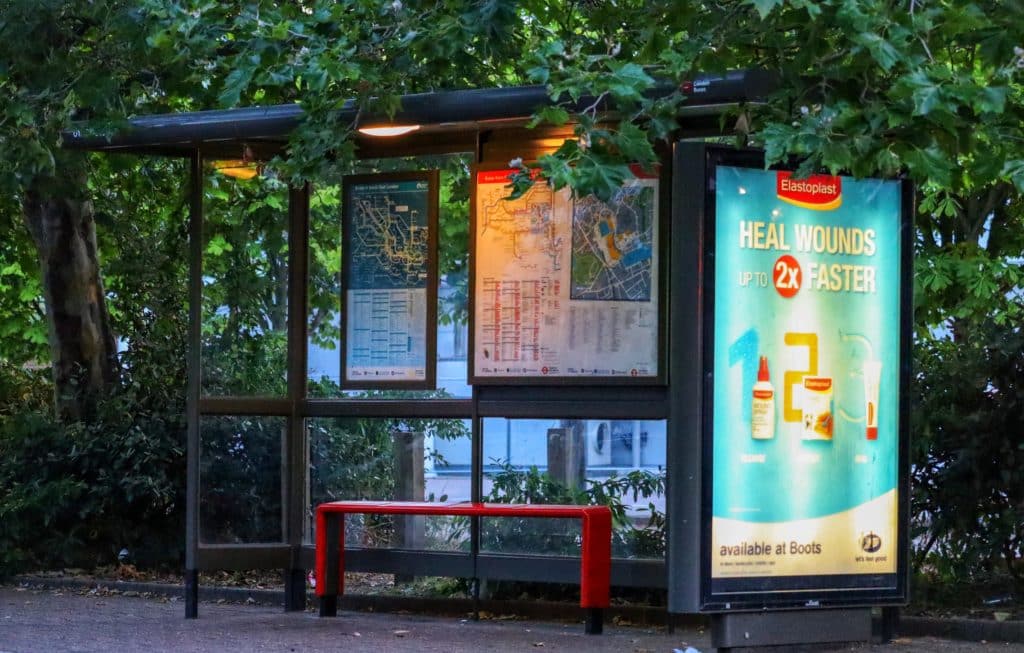
Quality of Adverts
Digital bus stop advertising gives advertisers more room to play around with advert design. With traditional posters, advertisers would be limited to text, images and static graphics. With digital screens, advertisers can now take full advantage of animations, videos and even volume to maximise their attention-grabbing abilities.
A great example of digital bus stop advertising being pushed to the max was by Pepsi. Pepsi managed to combine augmented reality with a smart bus stop to create a truly unforgettable experience. Hats off to the marketing team at Pepsi who saw the campaign go viral!
Minimal Maintainance, Maximum Control
Imagine having control of poster advertisements for 50 bus stops (25 there, 25 back) for a bus stop route. You can currently only show one advertiser at each bus stop at one time. Every time you swap advertisers, or the advertiser wants to update their ad, you will need to pay your maintenance team to visit each bus stop, take down the existing advert and replace it with the new one. For over 50 locations, this time and money will add up quickly.
Now let’s look at a digital bus stop advertising network for the same 50 locations. Let’s imagine that the user is showing content for 10 different advertisers during the day. One advertiser realises there was a typo in their copy and wants to change their adverts across all 50 sites. So what does the user do? They ask the advertiser for the updated advert, upload it to their digital signage software, press update, and all 50 screens now show the correct advert. Yup, it’s that simple.
With cloud-based software, the user can control their digital bus stop advertising network from anywhere. Users can also pull reports for the amount of time adverts have been displayed on screens to give reporting back to advertisers.

3. Transform your City into a Smart City
As time goes on, the popularity of smart cities is on the rise. As cities look to become more optimised and connected, local councils and governments are investing in technologies that benefit tourists and visitors alike. From smart transport to bins that let the council know they need emptying, technology is leading cities into a new digital age.
If you’ve read this far, you’ll know just how smart a smart bus stop can be! Now we turn our attention to how these digital bus stops are acting as a catalyst for smart cities. You’ll know by now that the screen can display:
- Live arrival times
- Live departure times
- Live destination arrival times
- Live weather
- Live road conditions
- Live service status
- Live Traffic
- Live journey fairs
- Live bus capacity
In short, there is an unlimited number of ways digital bus stops help develop smart cities. Most of these ways are achieved through clever data integrations.
These smart bus stops could also be linked to the council or bus company’s information hub, which allows for endless possibilities of what to display. For example, in Southampton (where we’re based) when Southampton FC play at the weekends, traffic increases noticeably. A smart bus stop can have its content scheduled to let passengers and residents know that the game is on and that their journey may take longer than expected. It could even go as far as to give live score updates for the local match.
There are endless possibilities for digital bus shelters and their ability to make smart cities smarter!

4. Environmentally Friendly Local Messaging with Bus Stop Digital Displays
With over 411 million metric tonnes of paper being produced each year (around 27 football pitches worth of trees every minute), there’s no denying that we should all be taking steps to reduce our paper usage. There are many ways of doing this, but an effective solution is to replace print media with digital content. For example, displaying messages and communications in the cloud, apps, or screens can drastically reduce the amount of paper we consume and as a result, the forests we demolish.Whilst, of course, there is some environmental cost to manufacturing a screen, once installed, you won’t have to touch it again. When content needs replacing, it is all done digitally, eradicating the need for paper.
Updates are also done remotely over the cloud, eliminating fuel consumption. To go a step further, councils and bus companies can even utilise the often unused roof of the bus shelter to install solar panels. These solar panels can help power the digital bus stop and reduce the power needed from the mains. Alternatively, these solar panels could be separated from the digital bus stop and produce power in a collective smart city project.

5. Engage Local Audiences
Being able to effectively engage with any audience is a powerful skill. It allows more targeted, relevant messaging, leading to more campaign success and more effective spending. Each year, there is an unlimited number of events councils, cities, and local authorities are trying to communicate with their residents. From the local fireworks show and park runs to environmental and travel schemes, all these events need to reach the right audience.
When planning a marketing campaign or creating a customer persona, one of the most important aspects of your audience to consider is where they spend their time. This helps ensure your messages reach them. For example, if you’re targeting gym enthusiasts, your marketing efforts are better suited to gyms as opposed to fast-food restaurants. When thinking about targeting messages to residents, we can use this logic too – where will they be? A safe bet is that residents will be using the bus to get to work, visit friends, and go to the shops in the local area. As a result, they will be spending a portion of their time at local bus stops. Therefore, if you’re targeting this audience, it’s a great place to display your messaging. Digital screens can display multiple local messages to help promote as many schemes/events as possible while reaching as many residents as possible. Screens can also react to live events. , thanks to the nature of cloud-based software. Users can update content on the day (or even schedule content) to get across the most relevant messages possible. For example, it could be saying well done to residents who took part in the park run.

6. Promoting Good Hygiene and Safety Practices to Passengers and Drivers
In today’s world, maintaining good hygiene and keeping public spaces clean is more important than ever. With seasonal flu and other viruses spreading quickly, it is crucial to keep people informed with the latest health and safety messaging. Having access to up-to-date guidance on how to prevent illness and maintain hygiene can help protect employees, customers, and visitors.
Traditional printed posters have long been used to share health advice, but they quickly become outdated as recommendations evolve. The process of designing, printing, and deploying new posters can be slow, making it difficult to keep up with changing guidance.
Digital signage offers a modern solution. The moment new advice is released, whether from public health authorities or internal communications teams, it can be instantly displayed on screens across multiple locations. This ensures that the latest hygiene and safety messages reach people in real time. For official flu prevention guidance, visit the NHS flu prevention page.
This approach is also highly effective in transport hubs like bus stops and train stations. Animated content and attention-grabbing visuals help reinforce important messages, such as handwashing reminders, respiratory hygiene tips, and the importance of keeping communal spaces clean. With template-based digital signage software, organisations can quickly update and deploy health and safety messaging in seconds, ensuring people stay informed and protected wherever they are.
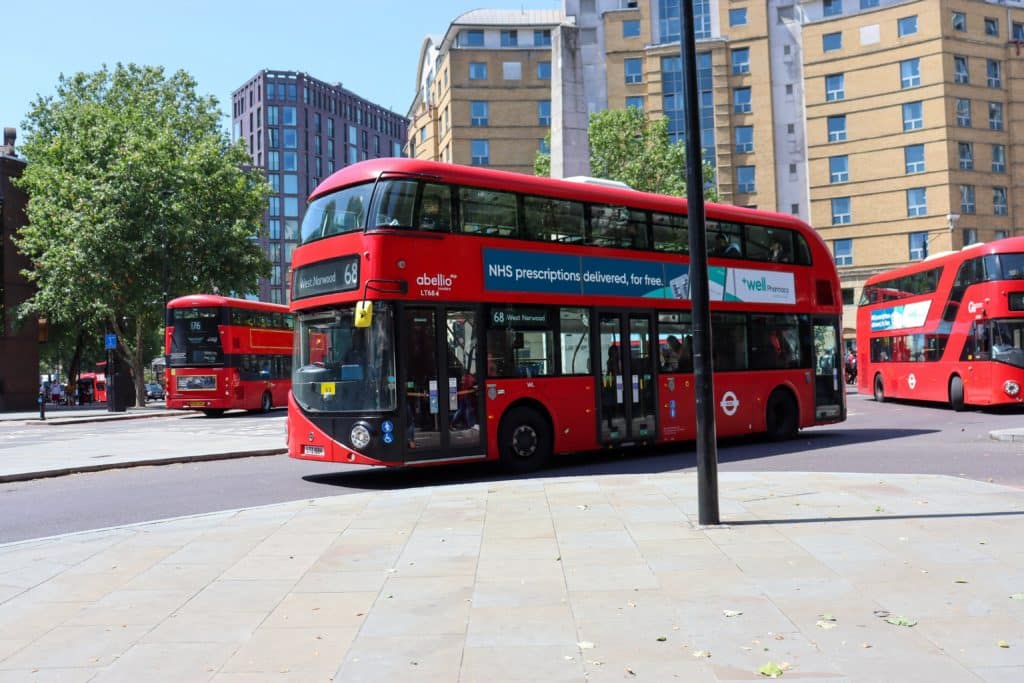
7. Minimise Content Deployment Times
In this day and age, we want automation and efficiency in everything we do. That’s why we have scheduling software, data feeds, triggers, timers and more. When prospecting new technologies, organisations are asking themselves 4 main questions:
Does this save time?
Does this save money?
Does this make our job easier?
Does it help us do our jobs better?
These are the 4 questions any person managing a network of paper bus stop advertisements should consider.
You’ll know by now that printing and deploying paper-based ads takes time. Each time the poster needs updating, you need to take it down, design a new one, and then print and install it. Multiply this process across 98,000 sites, and you’re spending an eye-watering amount of time updating your network. Swap all these posters with screens and digital signage software, and every single screen can be updated in seconds. That’s a whole lot of time saved!
You can further minimise your content deployment times by utilising digital signage scheduling features. With scheduling, you have full control over when your content goes live on screen. You could upload and schedule all your Bonfire Night content as early as June, setting it to appear automatically in October. When the time comes, your screens will display the content exactly as planned. Plus, you can set an expiry time, ensuring the content is automatically removed when it’s no longer needed.
We hope you enjoyed our deep dive into how smart bus stops are changing the transport game for the better. From advertising and local messaging to a reduced environmental impact and additional revenue streams, these bus stops are doing it all!
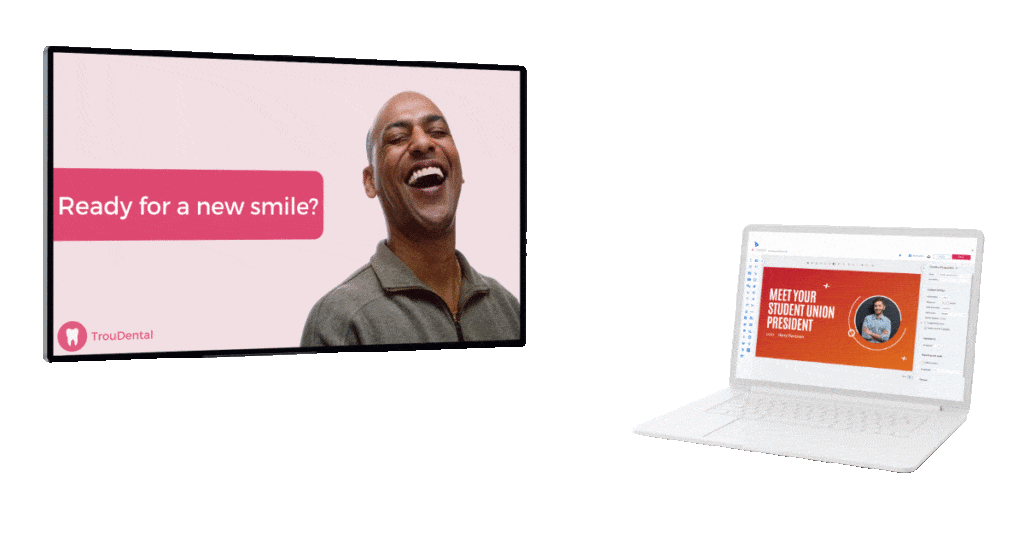
We hope you enjoyed our deep dive into how smart bus stops are changing the transport game for the better. From advertising and local messaging to a reduced environmental impact and additional revenue streams, these bus stops are doing it all!
If you have any questions about smart bus stops, speak to an expert today. Call our friendly team on 02380 981110 or Email info@troudigital.com for a no-obligation consultation. Alternatively, click the button below.
